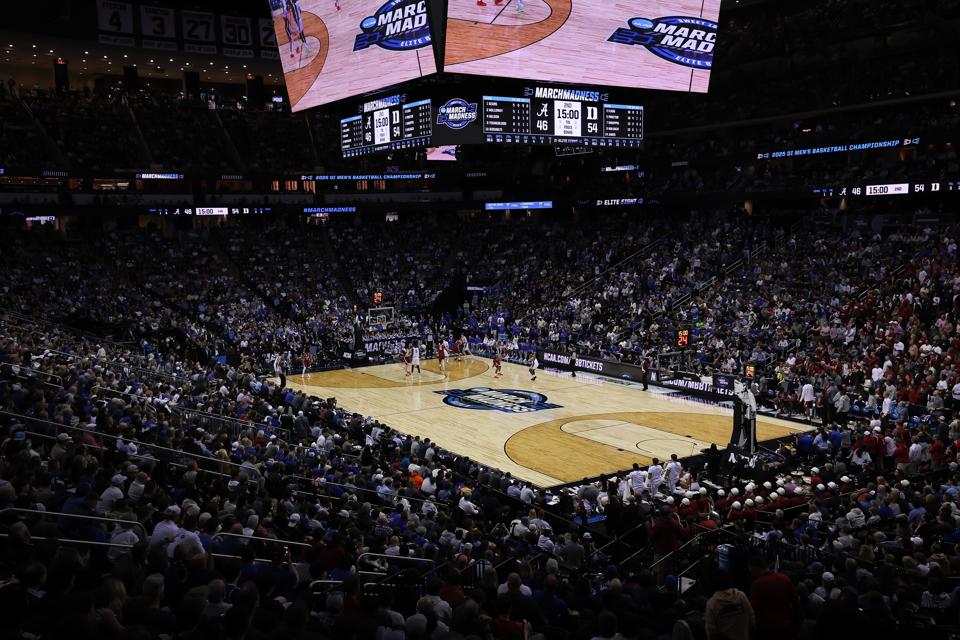Very few things, like sports, unify people across backgrounds, cultures, and ideologies. Sports are the ultimate connectors. One of the best examples of this is the NCAA Tournament. March Madness captivates us for three weeks with buzzer-beaters, heartbreaks, and Cinderella stories that defy expectations. But beyond the spectacle, March Madness also offers beneficial workplace and leadership lessons.
Whether battling on the court or building a high-performing team to compete in the business arena, the game is won by those who can lead under pressure, adapt quickly, and cultivate culture—not just talent. In today’s hyper-competitive environment, the same principles that lead to championships also lead to thriving, resilient workplaces. Here are four leadership lessons March Madness can teach us about building healthier, higher-performing organizations.
1. Build Bench Strength
Basketball is one of the few sports where a single player can dramatically shift a game’s trajectory. But even the most elite players can’t do it alone. Depth wins championships. In college basketball, what separates contenders from pretenders is a strong bench—a reliable sixth man, role players who know their purpose, and a culture that emphasizes development across the roster. The same is true in business. Too many companies build cultures around a few “go-to” employees while underutilizing or overlooking the rest.
This approach leads to burnout, fragility, and numerous bottlenecks. Winning organizations share the load. They develop their people, prepare for contingency and the worst-case scenario, and build systems that don’t rely on one individual. The whole team is ready when the unexpected happens—not just the star player. And when needed, yes, the superstar steps in and takes over—but not at the expense of the system.
2. Coach The Culture
Great coaches like Mike Krzyzewski, John Wooden, Dean Smith, and Pat Summitt are remembered not just for their playbooks but also for the cultures they built. Tactics and having the most talent can win games. But culture wins championships. These coaches created systems that instilled belief, clarity, and, most importantly, accountability. They didn’t just teach basketball; they developed mindsets. In business, the same principle holds. CEOs aren’t just strategists—they’re culture-shaping coaches.
And the rest of the executive team? Think of them as assistant coaches, each with unique specialties, working together to mold a resilient, healthy, and high-performing environment. Teams mirror their leaders, including their habits, tone, and emotional regulation. If a company claims to value well-being but its leadership is burnt out, doesn’t represent a good standard of fitness, and is frantic, that contradiction will rapidly spread. Culture isn’t something you declare. It’s something you coach and embody—starting with yourself.
3. Survive And Advance
The beauty and perhaps the most exciting part of March Madness is its unpredictability. Rarely does a team breeze through the tournament untested. Mistakes, close calls, and momentum swings are the norm, not the exception. The teams that thrive aren’t the ones who avoid adversity and obstacles. Instead, thriving teams remain composed under pressure and inevitable scrutiny. The same goes for high-performing workplaces. Mistakes and mishaps are inevitable, and challenges will emerge.
How your team responds matters more than what initially goes wrong. Winning organizations build resilience. They embed psychological safety into the company DNA so people can speak up, reflect honestly, and course-correct without fear and repercussions. Setbacks galvanize healthy, high-performing organizations, not fracture them. You don’t survive and advance by avoiding adversity. You do it by moving through it with courage, clarity, and composure.
4. Call Strategic Timeouts
In basketball, momentum is everything. A well-timed timeout can change the course of a game—slowing an opponent’s run, calming rattled players, or giving space to reset and re-strategize. Great coaches don’t just react. They sense when the energy is shifting and act before further damage occurs. Workplaces need the same instinct. Leaders must be able to sense when pace and pressure are becoming unsustainable: morale is fading, productivity is dipping, well-being is plummeting, or the team is running on fumes. In those moments, pushing harder isn’t the answer. Pausing is.
Leaders can call strategic timeouts to recalibrate priorities, encourage micro-rests between meetings, gather the pulse of your workplace for better well-being initiatives, or rework team rhythms to better align with energy patterns. Sustained performance doesn’t come from the constant hustle. It comes from knowing when to go and when to breathe. Call your timeouts before burnout forces you to.
The Hardwood Has Leadership Lessons For The Boardroom
Basketball, like business, isn’t just about talent. It’s about depth, resilience, culture, and composure under pressure. And the best leaders—whether in the locker room or the boardroom—aren’t just chasing short-term wins. They’re building environments designed with the long-term in mind where winning becomes the natural outcome of the system they’ve cultivated. As the legendary UCLA coach John Wooden said: “Big things are accomplished only through the perfection of minor details.”

